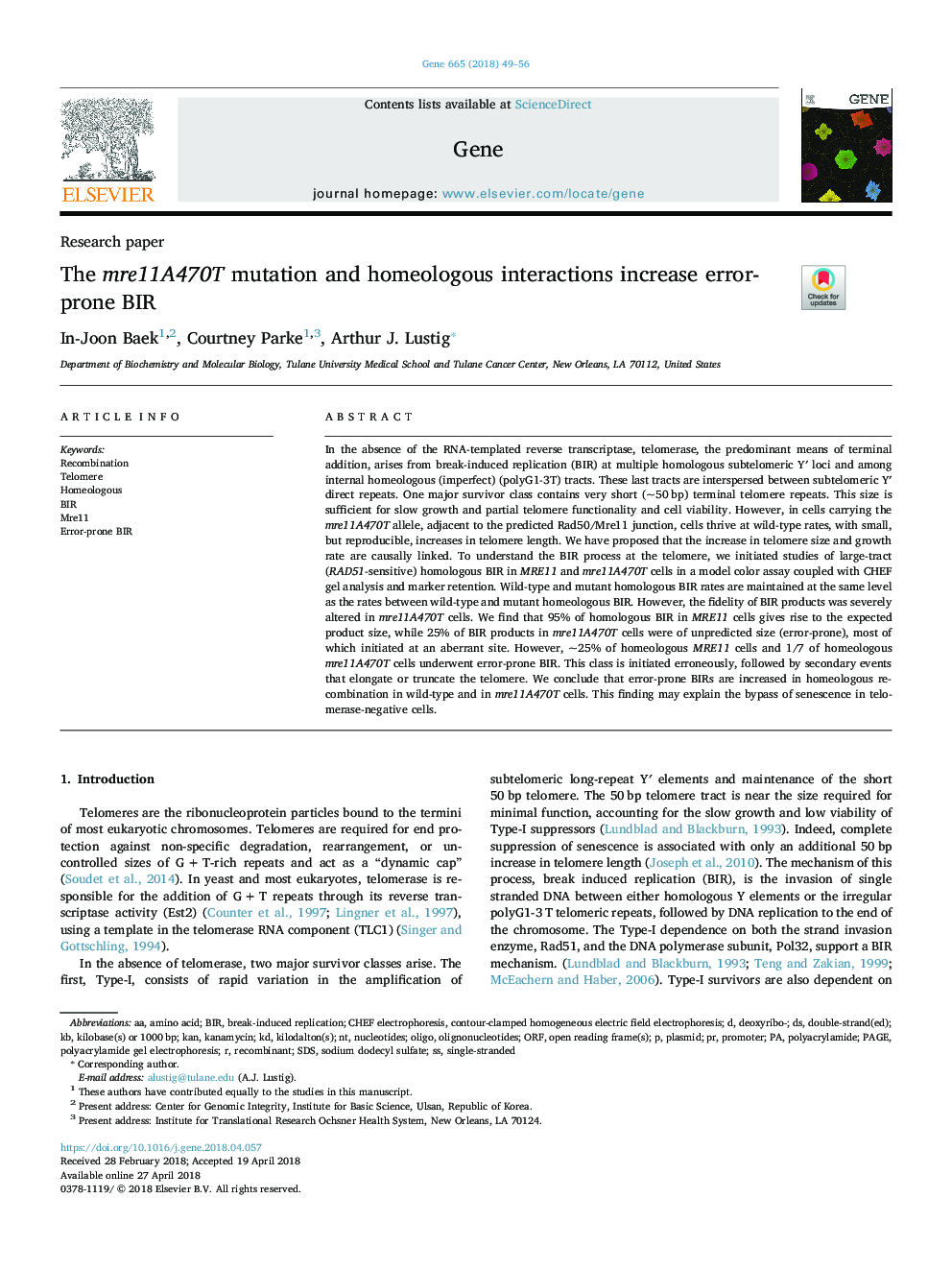| Article ID | Journal | Published Year | Pages | File Type |
|---|---|---|---|---|
| 8644897 | Gene | 2018 | 8 Pages |
Abstract
In the absence of the RNA-templated reverse transcriptase, telomerase, the predominant means of terminal addition, arises from break-induced replication (BIR) at multiple homologous subtelomeric Yâ² loci and among internal homeologous (imperfect) (polyG1-3T) tracts. These last tracts are interspersed between subtelomeric Yâ² direct repeats. One major survivor class contains very short (~50â¯bp) terminal telomere repeats. This size is sufficient for slow growth and partial telomere functionality and cell viability. However, in cells carrying the mre11A470T allele, adjacent to the predicted Rad50/Mre11 junction, cells thrive at wild-type rates, with small, but reproducible, increases in telomere length. We have proposed that the increase in telomere size and growth rate are causally linked. To understand the BIR process at the telomere, we initiated studies of large-tract (RAD51-sensitive) homologous BIR in MRE11 and mre11A470T cells in a model color assay coupled with CHEF gel analysis and marker retention. Wild-type and mutant homologous BIR rates are maintained at the same level as the rates between wild-type and mutant homeologous BIR. However, the fidelity of BIR products was severely altered in mre11A470T cells. We find that 95% of homologous BIR in MRE11 cells gives rise to the expected product size, while 25% of BIR products in mre11A470T cells were of unpredicted size (error-prone), most of which initiated at an aberrant site. However, ~25% of homeologous MRE11 cells and 1/7 of homeologous mre11A470T cells underwent error-prone BIR. This class is initiated erroneously, followed by secondary events that elongate or truncate the telomere. We conclude that error-prone BIRs are increased in homeologous recombination in wild-type and in mre11A470T cells. This finding may explain the bypass of senescence in telomerase-negative cells.
Keywords
SDScontour-clamped homogeneous electric field electrophoresisMRE11PAGEORFPolyacrylamideBIRkiloDalton(s)amino acidpolyacrylamide gel electrophoresisoligoRecombinantTelomeresingle-strandedbreak-induced replicationRecombinationsodium dodecyl sulfateopen reading frame(s)KanNucleotidesPromoterPlasmidKanamycin
Related Topics
Life Sciences
Biochemistry, Genetics and Molecular Biology
Genetics
Authors
In-Joon Baek, Courtney Parke, Arthur J. Lustig,
